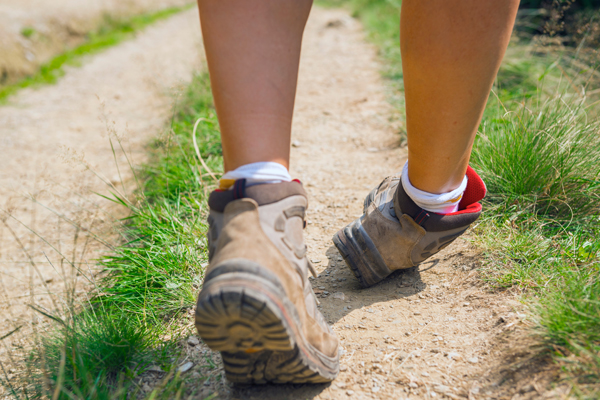The other day, I was playing badminton at my badminton club and while I was there, one of the members twisted his ankle while trying to make the best shot of his life. In general, twisting one’s ankle is quite common in badminton or in any sports (basket, tennis, rugby, etc.…), but not only that, in everyday life it can happen to you if you miss a step or stumble on the pavement.
Very rapidly people gathered around my friend who was now sitting on the floor in pain trying to make sense of what had just happened. We asked for help, and he was given some ice and soon enough was helped up to go home to rest.
This situation got me thinking about what the best approach was to help him and what everybody in this situation should be doing to promote a good recovery, so that the person can go back as quick as possible to his activity.
What my friend had done was most likely a lateral ankle sprain (LAS). This is when you twist your foot inward, which happens more often than the other way round. It can cause quite some pain, swelling and bruising, and if you can’t put weight on it or do less than 4 steps on it, pay your doctor or A&E a visit to have it properly looked at.
You might have heard about the acronym RICE (Rest – Ice – Compress – Elevate) to help with the management of soft-tissue injuries such as sprains. At my school I was taught the PEACE and LOVE acronym (Protect – Elevate – Avoid anti-inflammatories – Compress – Education – Load – Optimism – Vascularisation – Exercise) which includes both immediate care and further management of soft-tissue injuries. Here is what how to follow this guidance.
PEACE guides us to the first steps right after the injury for 1 to 3 days:
P – Protect
Avoid activities and movements that increase pain during the first few days after injury.
Avoid putting weight on your ankle or do any movement that aggravates it. You should rest but not for too long as it can compromise the good recovery of your soft tissues in terms of strength and quality.
E – Elevate
Elevate the injured limb higher than the heart as often as possible.
This probably speaks for itself. The aim is to promote fluid flow.
A – Avoid anti-inflammatories
Avoid taking anti-inflammatory medications as they reduce tissue healing. Also avoid icing.
Inflammation plays an important role in the healing process, inhibiting inflammation with medication may affect the healing process. Regarding the application of ice, according to some research there is no evidence that ice is that effective for sprains, it will probably be more of a painkiller.
C – Compress
Use elastic bandage or taping to reduce swelling.
The compression around your ankle will limit the swelling.
E – Education
Your body knows best. Avoid unnecessary passive treatment and medical investigations and let nature play its role. This point is really advice to health care professionals to encourage them to explain the injury and set realistic expectations with the patient instead of rushing things by trying many different approaches.
After a few days, when the inflammation has come down, it is time for rehabilitation and this is when we use the LOVE guidance.
L – Load
Let pain guide your gradual return to normal activities. Your body will tell you when it’s safe to increase load. This promotes the back to normal activities as soon as possible without causing pain for a good recovery.
O – Optimism
Condition your brain for optimal recovery by being confident and positive. Having a clear understanding of the process and being optimistic with it helps with a better outcome.
V – Vascularisation
Choose pain-free cardiovascular activities to increase blood flow to repairing tissues. When doing pain free exercise or mobilisation it helps with the blood flow to the area
E – Exercise
Restore mobility, strength and proprioception by adopting an active approach to recovery. Finally, doing exercises helps with strengthening, mobility, proprioception and reduces the risk of another incident.
An Osteopath can help diagnose a sprained ankle and give you tips on how to move forward as well as provide some hand on treatment to help the healing process and rehabilitation of your ankle.
Source: Dubois, B. & Esculier, J.-F., 2020. Soft-tissue injuries simply need PEACE and LOVE, British Journal of Sports Medicine, 54(2), pp.72-73.

